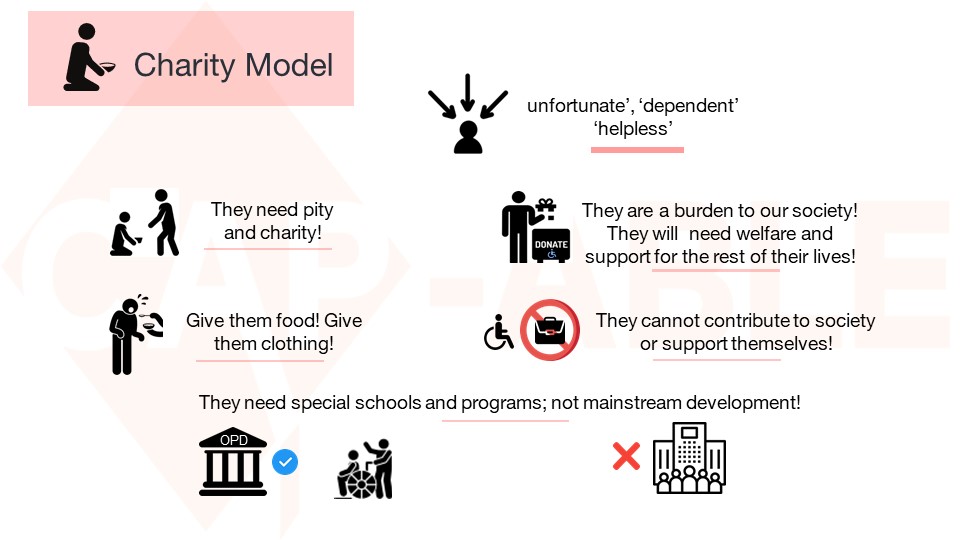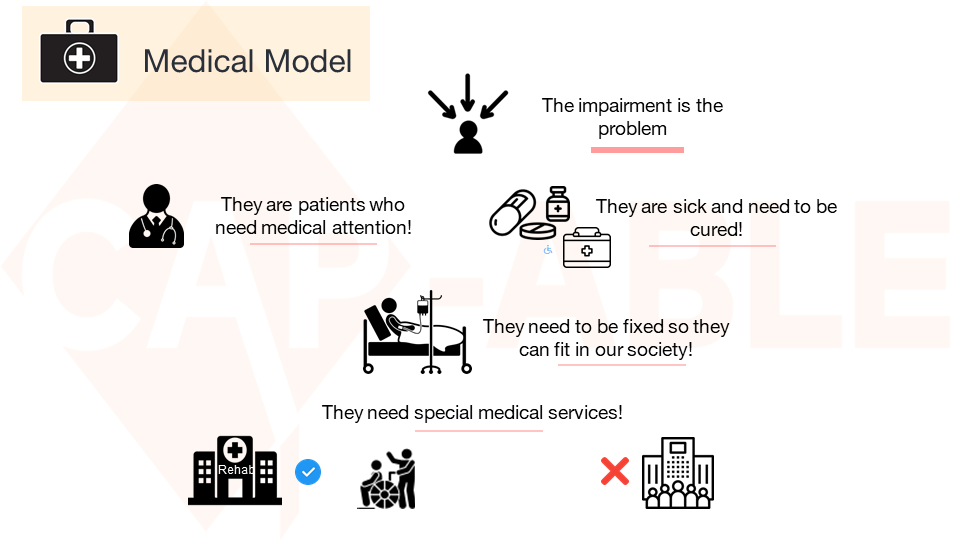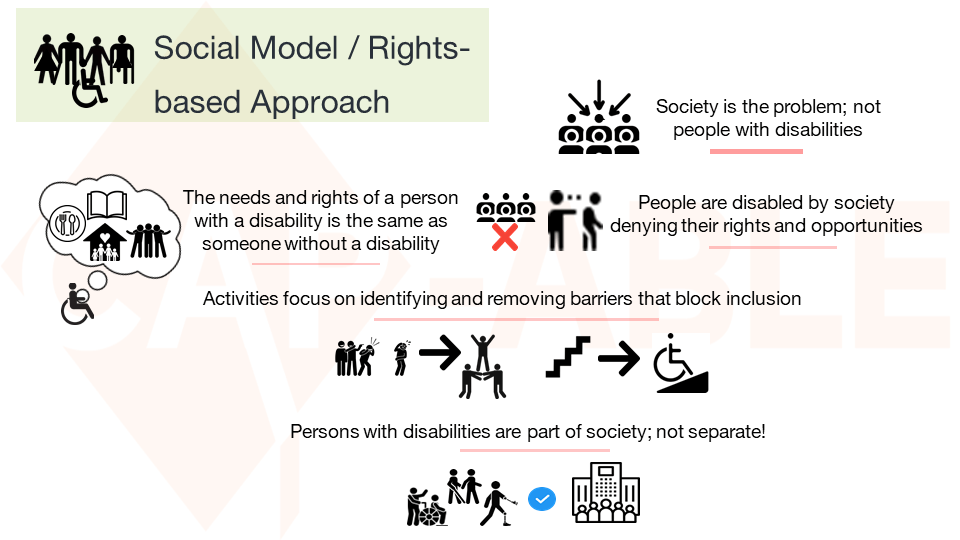Models of viewing disability
There are three ways that disability has been approached over decades. The first two models – medical and charity approaches – focus on barriers to participation being with the individual with an impairment. The third way – the social model – focuses on barriers being with society’s view of people with disabilities:
What can you find in this section?
Charity Approach
Under the Charity Model, activities aim to ‘help’ people with disabilities who are ‘helpless’ and outside of ‘normal’ society.
- Disability is seen as a problem in the person. People with disabilities are seen as ‘unfortunate’, ‘dependent’ or ‘helpless’; and generally regarded as people who need pity and charity.
- The charity model assumes that people with disabilities cannot contribute to society or support themselves; efforts and activities work mainly towards providing them with money or gifts, such as food or clothing.
- In this model, people with disabilities become long-term recipients of welfare and support; as well as aid provided by specialist organisations, but never included in mainstream development.
- People with disabilities are viewed as a separate group away from the rest of society, to be treated differently.

Medical Approach
Under the Medical Approach, activities aim to ‘fix’ person with disabilities, who are ‘sick’, so they can join ‘normal’ society.
- Disability is seen a problem in the person.
- This is the more traditional model of understanding disability, that focuses on a person’s impairment as the obstacle to their full participation in society and seeks to ‘cure’ or ‘improve’ individuals to ‘fit’ them into society.
- The medical model defines people with disabilities only as a patient with medical needs; and as such, still segregates people with disabilities from the mainstream.
- Only medical help is offered, carried out by specialists;
- This is a generally expensive approach, that tends to benefit a relatively smaller number of people with disabilities.

Social or Rights-based model: Inclusive Approach
Under the Social or rights-based model, activities aim to address barriers in society so that people with disabilities are able to fully participate in all aspects of community life.
- The focus is shifted on inclusion as people with disabilities are part of society, rather than separate. Systems, policies, processes and attitudes in society are recognised as the problem to be fixed, adapted and changed, not people with disabilities.
- The model argues that people are disabled by society denying their rights and opportunities, and sees disability as the social consequences of having an impairment or functional limitation.
- The rights of people with disabilities such as rights to education, life and opportunities and their needs such as the need for belonging, community and love, are the same as people without disabilities.
- The model emphasizes that activities should focus on identifying and removing attitudinal, environmental and institutional barriers that block inclusion.

(Adapted from: Travelling together. How to include disabled people on the main road of development, by Sue Coe and Lorraine Wapling. World Vision, UK 2010)
Other Links
RECEIVE OUR UPDATES
- →
-
Chat with Us!
Do you have a comment, suggestion, question or request for more information? Let us know!

